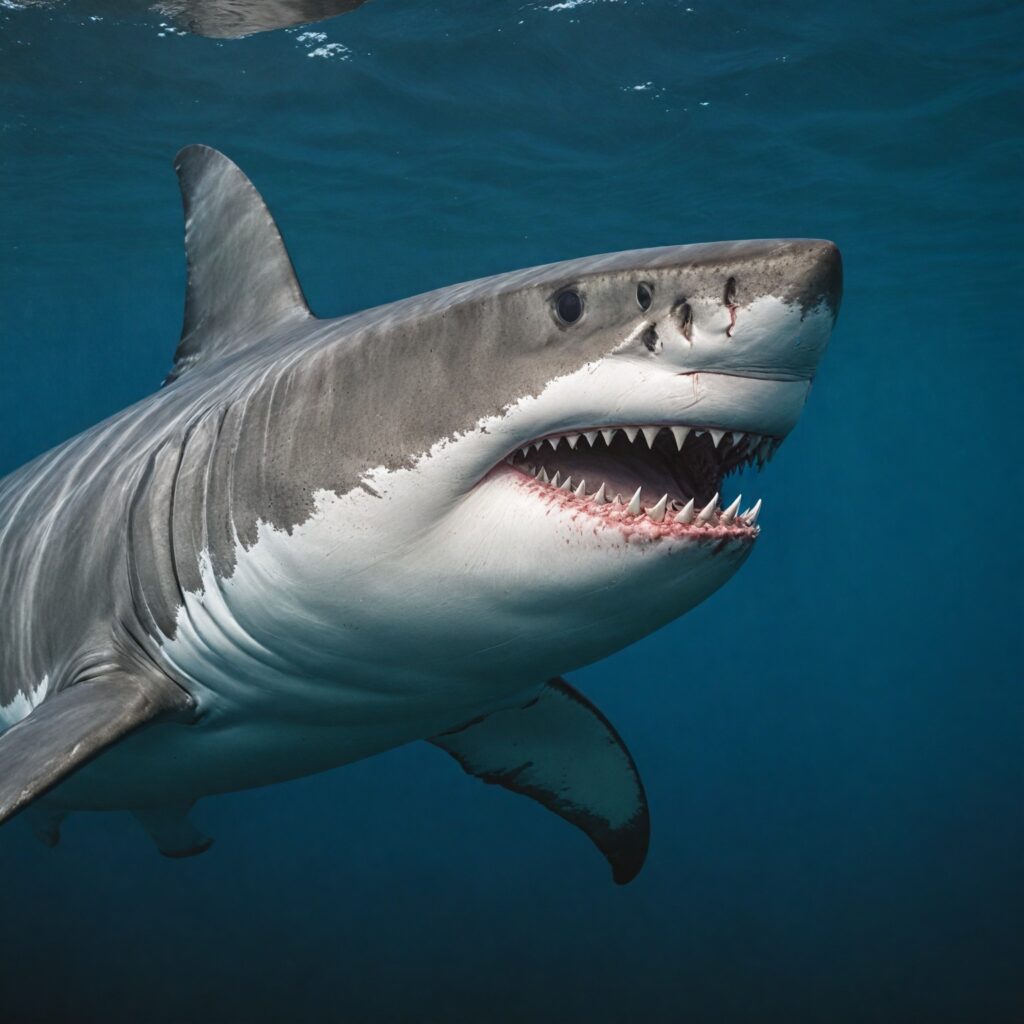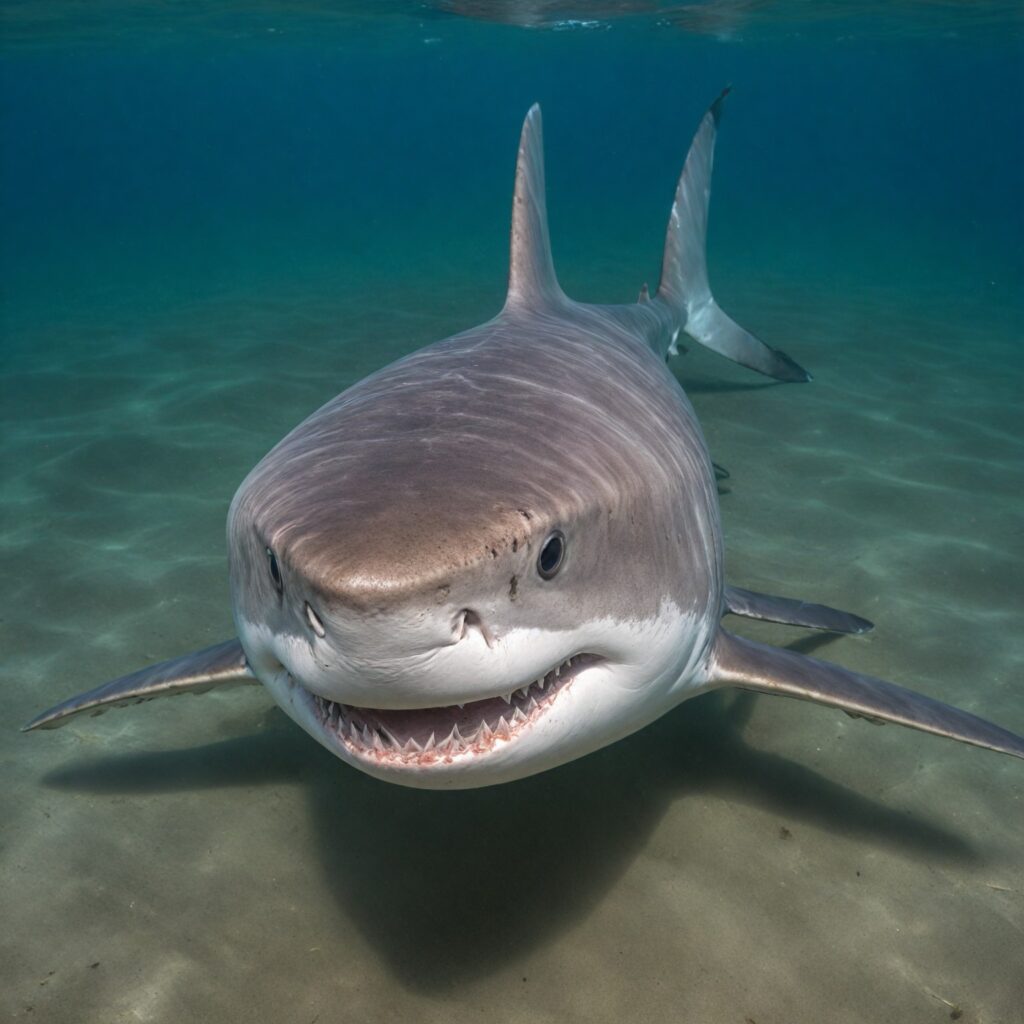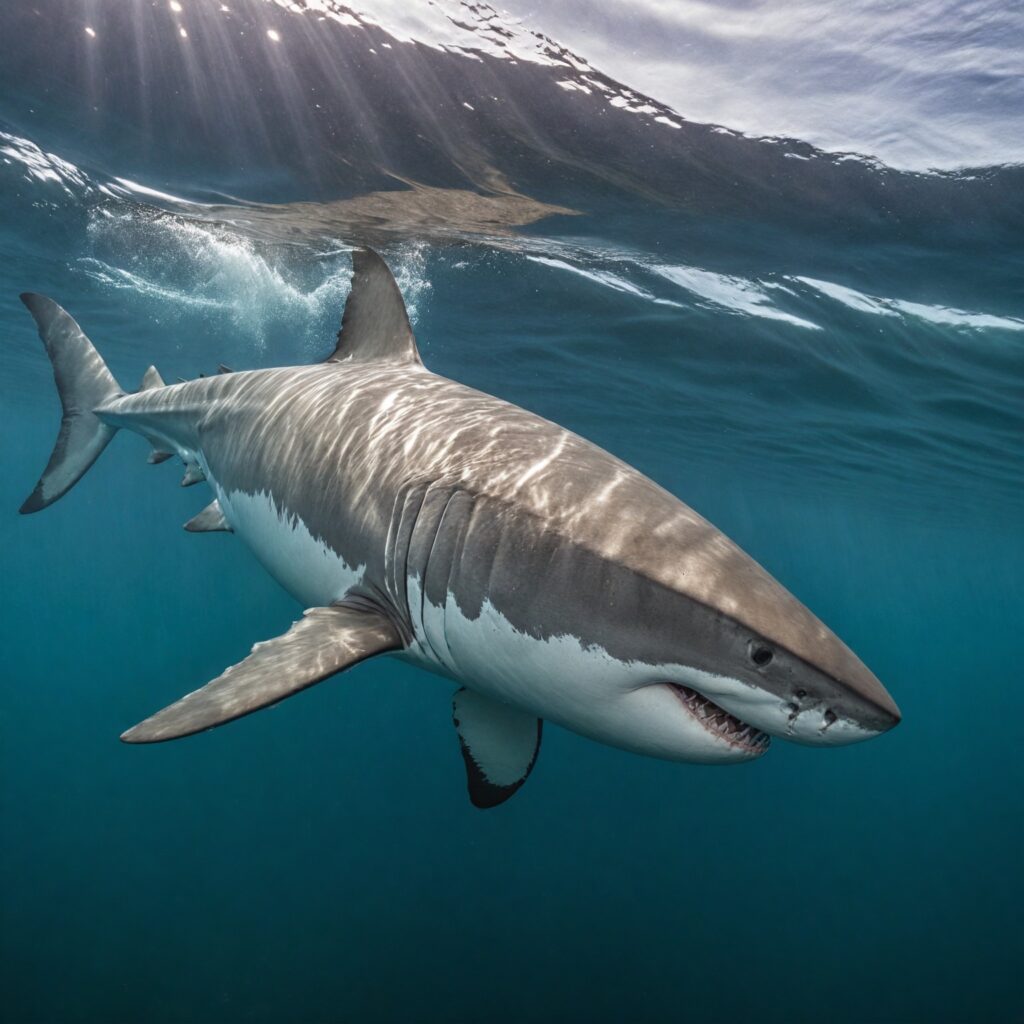Great White Shark Behavior, also known as white sharks, are fascinating creatures that inhabit the world’s oceans, captivating the imagination of both scientists and the general public alike. In this comprehensive guide, we delve into the behavior and biology of juvenile white sharks, shedding light on their intriguing habits and interactions within their environment.
Key Takeaways
- Juvenile white sharks exhibit distinct behaviors that contribute to their survival and development.
- Understanding these behaviors is crucial for conservation efforts and promoting coexistence with these apex predators.
- Researchers employ various techniques such as tagging and tracking to uncover the mysteries of juvenile white shark behavior.

What is a White Shark (aka Great White Shark)?
Great white sharks, scientifically known as Carcharodon carcharias, are apex predators characterized by their formidable size, sleek bodies, and iconic serrated teeth. They are renowned for their role at the top of the oceanic food chain and are found in coastal waters across the globe.
“Great white sharks are apex predators, playing a vital role in maintaining the health and balance of marine ecosystems.”
White Shark Nurseries in Southern California
Southern California serves as a crucial habitat for juvenile white sharks, providing sheltered nurseries where young sharks can thrive and grow. These nurseries offer abundant prey and favorable environmental conditions, facilitating the development of young white sharks before they venture into deeper waters.
“Southern California’s coastal waters serve as vital nurseries for juvenile white sharks, offering them a safe haven to mature and develop.”

Breathing
Like all sharks, white sharks rely on a specialized respiratory system to extract oxygen from the water. Through a process known as ram ventilation, they swim with their mouths open, allowing water to flow over their gills, where oxygen is absorbed and carbon dioxide is expelled.
“White sharks employ efficient breathing mechanisms, utilizing ram ventilation to ensure a constant supply of oxygen for their vital functions.”
Bumping
Juvenile white sharks often engage in a behavior known as bumping, where they gently nudge objects or other animals with their snouts. This behavior serves various purposes, including exploration, communication, and sensory investigation of their surroundings.
“Bumping is a common behavior among juvenile white sharks, serving as a means of exploration and interaction with their environment.”
Mouth
The mouth of a white shark is a formidable feature, housing rows of razor-sharp teeth designed for capturing and consuming prey. White sharks are known for their powerful bite force, allowing them to effectively hunt a wide range of marine species.
“The mouth of a white shark is a formidable weapon, equipped with rows of serrated teeth perfectly adapted for capturing and consuming prey.”

Spyhopping
Spyhopping is a behavior observed in various marine mammals, but it is also occasionally seen in white sharks. During spyhopping, the shark raises its head above the surface of the water, allowing it to observe its surroundings and potentially locate prey.
“Spyhopping is a rare behavior exhibited by white sharks, providing them with a vantage point to survey the marine environment.”
Human Connections
- White sharks have a complex relationship with humans despite their fearsome reputation.
- Encounters between white sharks and humans are relatively rare but can lead to sensationalized media coverage.
- Understanding white shark behavior is crucial for promoting peaceful coexistence and reducing negative interactions.
- White sharks and humans inhabit the same marine environment, emphasizing the importance of understanding and respecting their behavior for safe interactions.
| Behavior/Adaptation | Description |
|---|---|
| Ram Ventilation | White sharks utilize ram ventilation, swimming with their mouths open to facilitate breathing. |
| Bumping | Juvenile white sharks engage in bumping behavior for exploration and sensory investigation. |
| Mouth | The mouth of a white shark is equipped with rows of serrated teeth for capturing prey. |
| Spyhopping | White sharks occasionally exhibit spyhopping behavior, raising their heads above the water. |
| Tagging and Tracking | Researchers use tagging and tracking methods to study the movements and behavior of white sharks. |
Juvenile White Shark Behavior and Biology
Juvenile white sharks exhibit unique behaviors and physiological adaptations that enable them to survive and thrive in their marine environment. From their nursery habitats to their hunting strategies, understanding the behavior and biology of juvenile white sharks is essential for their conservation and management.
“Juvenile white sharks possess remarkable adaptations that allow them to navigate their environment and fulfill their role as apex predators.”

Share this idea
Conservation efforts for white sharks are vital for preserving the health of marine ecosystems and ensuring the long-term survival of these iconic predators. By sharing knowledge and raising awareness about white shark behavior, we can inspire greater appreciation and stewardship of our oceans.
“Sharing knowledge about white shark behavior is essential for fostering greater understanding and appreciation of these magnificent apex predators.”
Measuring Water Temperature at a Fine Scale
Understanding the influence of water temperature on white shark behavior is crucial for predicting their movements and habitat preferences. Advances in technology allow researchers to measure water temperature at a fine scale, providing valuable insights into the thermal ecology of white sharks.
“Measuring water temperature at a fine scale enables researchers to uncover the intricate relationship between temperature and white shark behavior, aiding in their conservation and management.”
Tracking
Tracking white sharks using electronic tags has revolutionized our understanding of their movements and behavior. By deploying tags equipped with GPS and depth sensors, researchers can monitor the whereabouts of individual sharks in near real-time, revealing their migration patterns and habitat use.
“Tracking white sharks using electronic tags provides invaluable data on their movements and behavior, offering insights that are essential for their conservation and management.”

Tagging
Tagging programs play a crucial role in white shark research and conservation efforts. By tagging individual sharks with identification tags or electronic devices, researchers can gather data on population dynamics, behavior, and distribution, aiding in the development of effective management strategies.
“Tagging programs are essential for white shark research, providing valuable data that informs conservation efforts and promotes the sustainable management of these apex predators.”
Solving the Mystery
The behavior and biology of white sharks continue to fascinate and intrigue scientists and enthusiasts alike. Through ongoing research and collaboration, we strive to unravel the mysteries surrounding these enigmatic predators, ensuring their continued survival in our oceans.
“Solving the mysteries of white shark behavior is a collaborative effort that requires dedication, innovation, and a deep appreciation for these remarkable apex predators.”
Scientist – Alison Kock
Alison Kock is a renowned marine biologist and shark expert dedicated to the study and conservation of white sharks. Her research focuses on understanding the behavior and ecology of these apex predators, with the goal of informing conservation efforts and promoting coexistence with humans.
“Alison Kock’s pioneering research has significantly advanced our understanding of white shark behavior and ecology, contributing to their conservation and management in marine ecosystems worldwide.”
Conclusion
Juvenile white sharks exhibit a fascinating array of behaviors and adaptations that enable them to thrive in their oceanic environment. By studying and understanding these behaviors, we can gain valuable insights into their ecology, promote their conservation, and foster peaceful coexistence with these iconic apex predators. Through continued research and collaboration, we can ensure the long-term survival of white sharks and the health of our marine ecosystems.
Are white sharks dangerous to humans?
While white sharks are apex predators, attacks on humans are rare and often a case of mistaken identity.
How do researchers study white shark behavior?
Researchers utilize various techniques such as tagging, tracking, and underwater observation to study the behavior of white sharks in their natural habitat.
What is the role of white sharks in marine ecosystems?
White sharks play a crucial role as apex predators, regulating prey populations and maintaining the balance of marine ecosystems.
